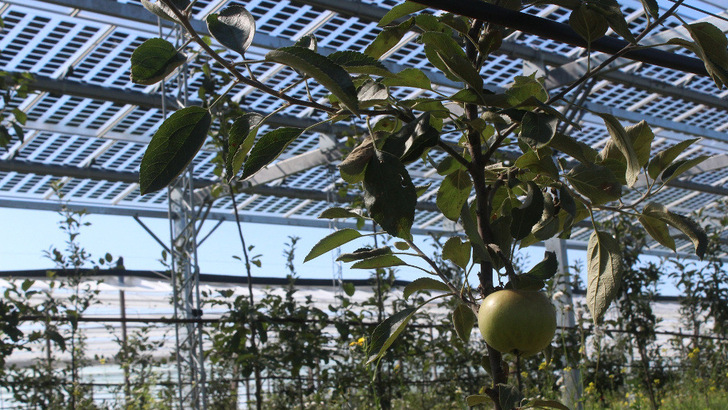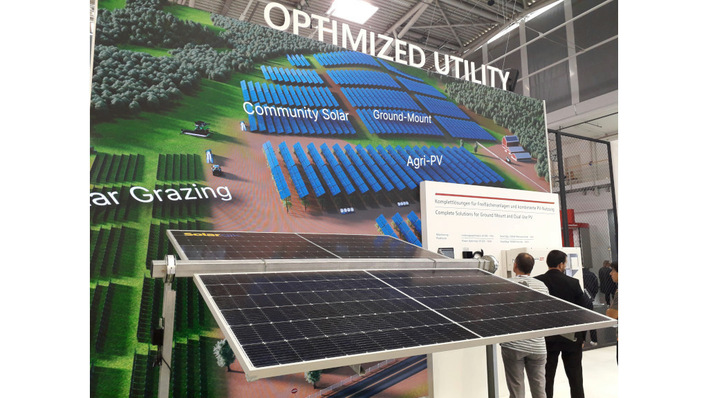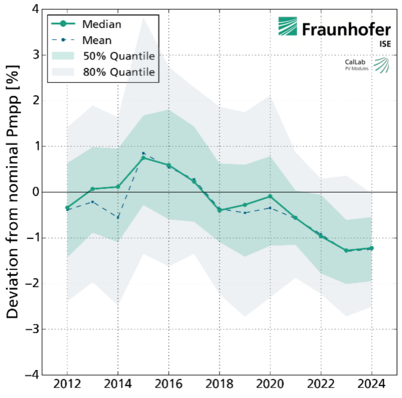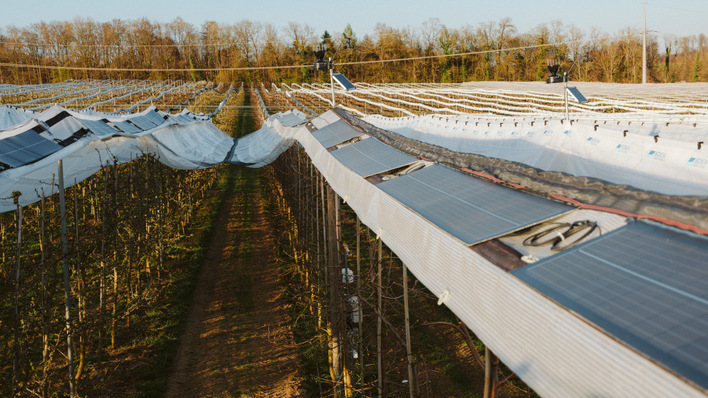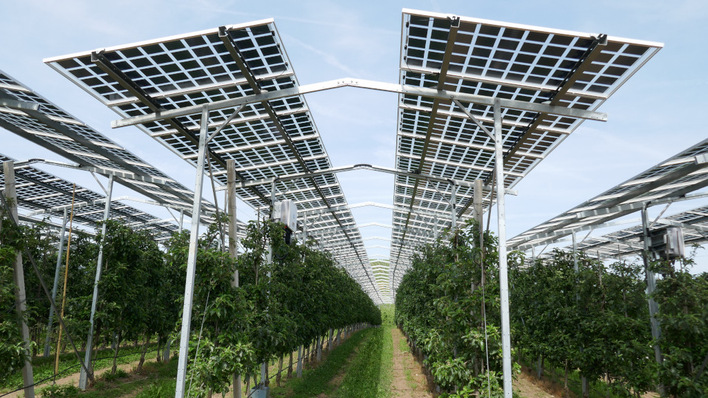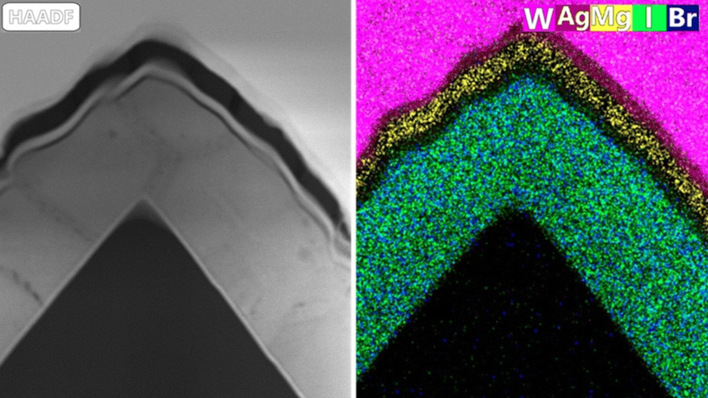The Vollmer fruit farm in southern Germany is making dual use of its land with an agri-PV installation. Beneath the solar modules, the farmer grows apples and pears while also generating solar power. The system includes two fixed arrays and a tracking system that adjusts the modules to follow the sun’s path. Altogether, the 1.5-hectare site is equipped with 880 kilowatts of photovoltaic capacity.
Both the modules and the fruit beneath them rely on the same resource: light. “The right amount of light is crucial for the health and productivity of the apple trees,” says Maddalena Bruno, project manager at Fraunhofer ISE. “Too little light slows growth, while too much can cause heat stress and sunburn.” As climate change brings longer periods of sunshine, managing light availability is becoming a greater challenge.
Optimising light for crops and energy
To address this, Bruno and her team have developed an approach that uses optimised solar tracking to provide apple trees with precisely the right amount of light – enough to support healthy growth, but not so much that it leads to sun damage. Previous methods typically rely on fixed shading levels for the agricultural area, but this is too simplistic: on a cloudy day, a 25 percent reduction in light is very different from the same reduction on a bright summer day.
Explore agri-PV in our new dual harvest special
Instead of relying on general shading ratios, the researchers focus on precisely defined target values for photosynthetically active radiation (PAR). These values are set for each stage of the trees’ development and adjusted daily. “Only in this way can we ensure that the plants always receive exactly the light they need, regardless of the weather,” says Bruno. “Our software calculates the optimal module position each day in advance, based on weather data and microclimatic measurements,” she adds. “Unlike many other systems, we don’t simply switch tracking on or off – we use true mathematical optimisation.”
Agri-PV – study shows apples thrive in partial shade
Simulating weather conditions
To achieve this, Bruno and her team developed an algorithm, which they presented at this year’s Agrivoltaics World Conference in Freiburg. The algorithm uses intelligent tracking to optimise the alignment of the solar modules based on weather forecasts and microclimatic data. Five typical weather scenarios, which can occur in any month of the growing season, are simulated. This enables the algorithm to respond flexibly to changing conditions without demanding excessive computing power. This is important, as recalculating weather data daily is highly resource-intensive. “Each day, we review the weather forecast for the following day and set the appropriate tracking strategy,” says Maddalena Bruno.
With continuous monitoring data from the installed sensors, the researchers can track precisely how light, soil and leaf moisture, and temperature develop across the site. To test the algorithm and assess its impact on the apples, one part of the tracking system was operated based on the light requirements of the fruit. Another section was managed as before, focusing on maximising solar yield. The results from both approaches were then compared with conditions on a reference plot without any solar installation.
EnergyDecentral 2026 – registration now open for exhibitors
Promising results and next steps
The initial results are promising. “With apple-optimised tracking, we achieve around 90 percent of the target light value for the trees, with a maximum reduction in electricity yield of just 20 percent,” says Maddalena Bruno. “By contrast, the conventional backtracking strategy provides only about 50 percent of the desired light value for the apples. This demonstrates that tailored control can significantly improve the balance between agricultural production and energy generation.”
The next step will focus on solar power. The algorithm is being refined so the tracking strategy can be aligned with the electricity spot market. “A customised tracking strategy also helps to meet various regulatory requirements,” adds Maddalena Bruno, referring to the curtailment of solar installations during periods of grid congestion. (su)


